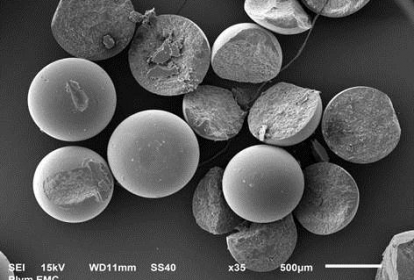The IWC has been concerned about the impact that chemical pollutants may have on cetacean populations since the early 1980s. Research on cetaceans and other mammals, including humans, indicates that many classes of chemical pollutants, particularly the persistent organic pollutants, are so-called 'endocrine disrupters,' meaning that they interfere with the endocrine (or hormone) system. As such they can increase susceptibility to disease and reduce reproductive success.
This is a complex issue given the huge number of synthetic chemicals introduced into the environment, the ways in which they may interact with each other, the difficulty in establishing whether they cause adverse health effects, and the difficulty quantifying any potential impacts on whale populations.
In response to this challenge, the IWC Scientific Committee has initiated four comprehensive and consecutive research programmes, adapting as our knowledge and understanding increase. Pollution 2000, Pollution 2000+, Pollution 2020 and most recently Pollution 2025.
Pollution 2000 and Pollution 2000+
The first two initiatives progressed from examining tissue concentrations for priority pollutants in key cetacean species, through to determining toxicological markers and health assessment endpoints that could be used to determine adverse health effects, culminating in the development of tools and techniques to estimate population level effects.
The IWC Scientific Committee has also initiated work looking at the sources of Polychlorinated Biphenyls (PCBs) which are proving to be a significant ongoing threat to some cetacean populations long after their production was banned. Initially widely used in industry and electrical appliances, PCBs were found to be a persistent contaminant of air, soil and water, and their production and use was banned in many countries. PCBs are also very soluble in fat and so can build up in animal fat along the food chain, and end up at sometimes high concentrations in cetaceans.
|
The model to estimate Effects of Pollutants on Cetacean Populations can be accessed at http://www.smru.st-andrews.ac.uk/IWC_PCB_Cet_Pop_Model
This includes details of how to adjust and run the model for your own applications. The model currently only assesses the risk from exposure to Polychlorinated Biphenyls (see below). |
In addition, a series of exploratory maps have been produced which display the concentration of contaminants in various cetacean species, globally and over time. These currently focus on PCBs, DDTs and mercury concentrations in animal tissues because they have been the focus of many monitoring programmes throughout the world over the last few decades. This means the results can be explored and used as gross indicators of changes in the uptake of these pollutants by different species over time. They should only be used as general indicators because of differences in the analytical methods used in different countries and changes in those methods over time. However, the maps serve to provide a means of identifying hot spots and data gaps.
A link to the maps and more details about what is displayed can be found here:
http://www.smru.st-andrews.ac.uk/IWC_Contaminant_Explorer/
Pollution 2020
The third stage, Pollution 2020, assessed the risk to cetaceans from microplastics and polycyclic aromatic hydrocarbons (PAHs). PAHs are both atmospheric and water-borne contaminants, primarily found in combustion products like oil and coal, and produced as a by-product of burning.
Pollution 2025
The latest phase in the work programme is focusing on cumulative effects and multiple stressors. A virtual, expert workshop was held in November 2020 to review new and improved methods, consider case studies and assess the scope to transfer approaches between different species and populations. The workshop concluded that, whilst mitigation planning for individual pollutants is now relatively straightforward, methods for mitigating cumulative stressors are much more difficult and further research is required.
Pollution 2025 is also setting out a multi-disciplinary, ‘One Health’ approach, recognising that the health of people, animals and our environment are all closely connected, and that pollutants can be just one component of multiple stressors.
Read more
Click to read the report of the Pollution 2025 Intersessional Workshop, held in November 2021
To read the 2015 Pollution 2020 report, SPOC - A Web Application to Investigate the Effects of Pollutants on Cetacean Populations, click here.
To read the 2014 report of the Pollution 2020 Steering Group click here.
To read the 2014 Pollution 2000+ report, Assessing the Population Consequences of Pollutant Exposure in Cetaceans from Ingestion to Outcome, click here.


